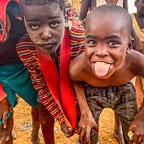The art of self expression: Supporting Somali women to tell their own stories
UNDP-supported exhibition of women’s poetry, photography and filmmaking opens in Mogadishu on International Women’s Day
“Women see life differently to men, so it’s important they tell their own stories,” says Zaima Abdi Ali, camera in hand, a smile on her face. A veterinary student in her final year, Zaima swapped the medicine cabinet for the digital darkroom when she joined a UNDP project funded by the SDG Facility that brought together 15 women from a range of backgrounds to learn new skills and use photography, poetry and filmmaking to document the issues they find important.
Now the results are out can can be seen in an exhibition in Mogadishu that opened on March 8th to celebrate International Women’s Day. There is also an online exhibition that can enjoyed by worldwide: https://www.somaliartsfoundation.org/through-my-lens
Some of the women taking part have experience in the visual arts or are established poets, some are complete beginners, but all agree that in a world where women’s voices are often drowned out, there is a need for more women to take up the pen and the camera and make sure their perspectives are given proper consideration.
“You can’t be a female filmmaker in Somalia easily,” explains Samia Osman, one of two trainers on the project who are helping the women improve their photography and video skills. “As soon as you take a camera out, you hear people saying “cameraman, cameraman” and then you get annoyed and you say back to them, “I’m not a cameraman, I’m a camerawoman.”
Sometimes women have to face more than just name calling. Even professional journalists working for established media houses complain of harassment at work and being ignored when it comes to decision making on what stories get covered and how. Women the world over face barriers men don’t have to deal with just to do their jobs — but in Somalia those barriers can be particularly high.
“The Somali media is a hostile environment for female journalists,” explained Laylo Osman, chair of the Somali Women Journalists Rights Association in a recent assessment done for UNDP. “They are frowned upon by a society that believes a woman’s role is to stay at home, cook and have children.”
In the arts, the story is the similar. The VoA recently ran a story on Sana Ashraf Sharif Muhsin, a woman artist who’s work is remarkable partly for being so unusual. An arts professor at Somali National University quoted in the story said he knew of only one other female artist working in the country.
In poetry, things are more promising. Somali women have always had a voice to speak about some areas of life and over the years, changes in technology — first tapes and radio and now the internet — have opened up new channels for their work to reach a wider audience — including, most recently, a new platform provided by UNDP’s Home of Somali Poetry initiative and the UNDP-supported annual Somali Poetry Awards. But women poets still struggle to get the same respect as their male equivalents.
Gradually, the playing field is becoming more level — partly thanks to the work of the women writers, photographers, filmmakers and artists who are already producing great work. But one hope for this project is to speed that process along by allowing more talented women to take up or improve their writing and shooting and craft stories that move an audience.
Trainer Samia, together with Sharmaarke Ali Adan, a London-based Somali fashion and editorial photographer, has taken the 15 participants in the project through an intense week of preparation where they learned photography, videography and post production and explored what issues are most important to them and how they could capture them in words, images and film.
Amal Mohamed, an entrepreneur with her own cosmetics business, decided to cover the challenges faced by women who set up their own companies. For Sagal Ibrahim, the subject has been women at the other end of economics: those who work in the local market selling fruit and just manage to make enough each day to feed themselves and their families, who she calls “women in survival mode”. Falastin, one of the poets taking part, is providing the narrative for a short film on the hidden work of motherhood. Other themes include friendship and connection among women and the danger of skin-whitening creams and beauty ideals pushed online.
“It’s been so exciting and so much fun, you know, when you bring a group of people together who are so passionate and who just needed an opportunity to be able to have a safe space to engage their creativity but also learn,” says Sagal Mahamed Ali, founder of UNDP’s partner on the project, the Somali Arts Foundation.
Samia’s long-term goal is to see women from the course start to work as professional female photographers and filmmakers. That’s not going to happen overnight, but in the meantime, the online and offline exhibitions will give a chance for people to see work on subjects that don’t usually get covered — and see them through a new set of female eyes showing that yes, in fact, women can carry equipment and they can capture stories as well as any “cameraman” out there.
Visit the online exhibition here: https://www.somaliartsfoundation.org/through-my-lens or
To read more about women’s poetry and explore our growing archive of the work of women poets, visit the Home of Somali Poetry at www.hoygamaansada.com.
